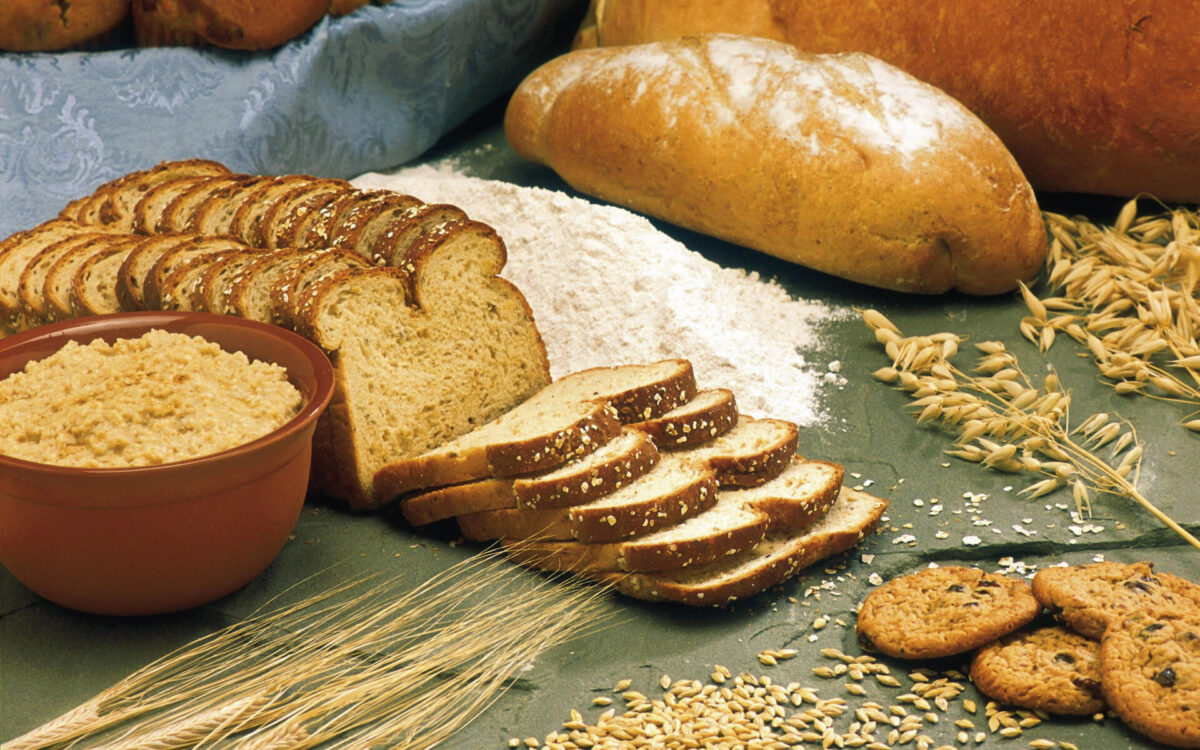Page snapshot: Quick facts about gluten, gluten sensitivities, and gluten-free alternatives.
Topics covered on this page: What is gluten and which major grass grains is gluten found in?; Why is gluten important in baking?; When and where were gluten-containing grains domesticated?; Why do some people avoid gluten?; What are the major gluten substitutes?; Resources.
Credits: Funded by the National Science Foundation. Any opinions, findings, and conclusions or recommendations expressed in this material are those of the author(s) and do not necessarily reflect the views of the National Science Foundation. Page by Deme Burns (2023).
Updates: Page last updated August 23, 2023.
Image above: Wheat and wheat-containing products like flour, bread, and cookies. Photo by Peak Px (CC0).
What is gluten and which major grass grains is gluten found in?
Gluten is a substance made up of two proteins, glutenin and gliadin. These proteins are found in some of the major grass grains known as cereals, including wheat (Triticum spp.), barley (Hordeum vulgare), rye (Secale cereale), and the human-created wheat-rye hybrid triticale (Triticosecale). Wheat is commonly found in breads, baked goods, cereals, and pasta. Barely is malted (germinated) as part of the fermentation process used in making beer and other alcohols; it is also used in food coloring. Rye can be found in beer, some breads, and other products.
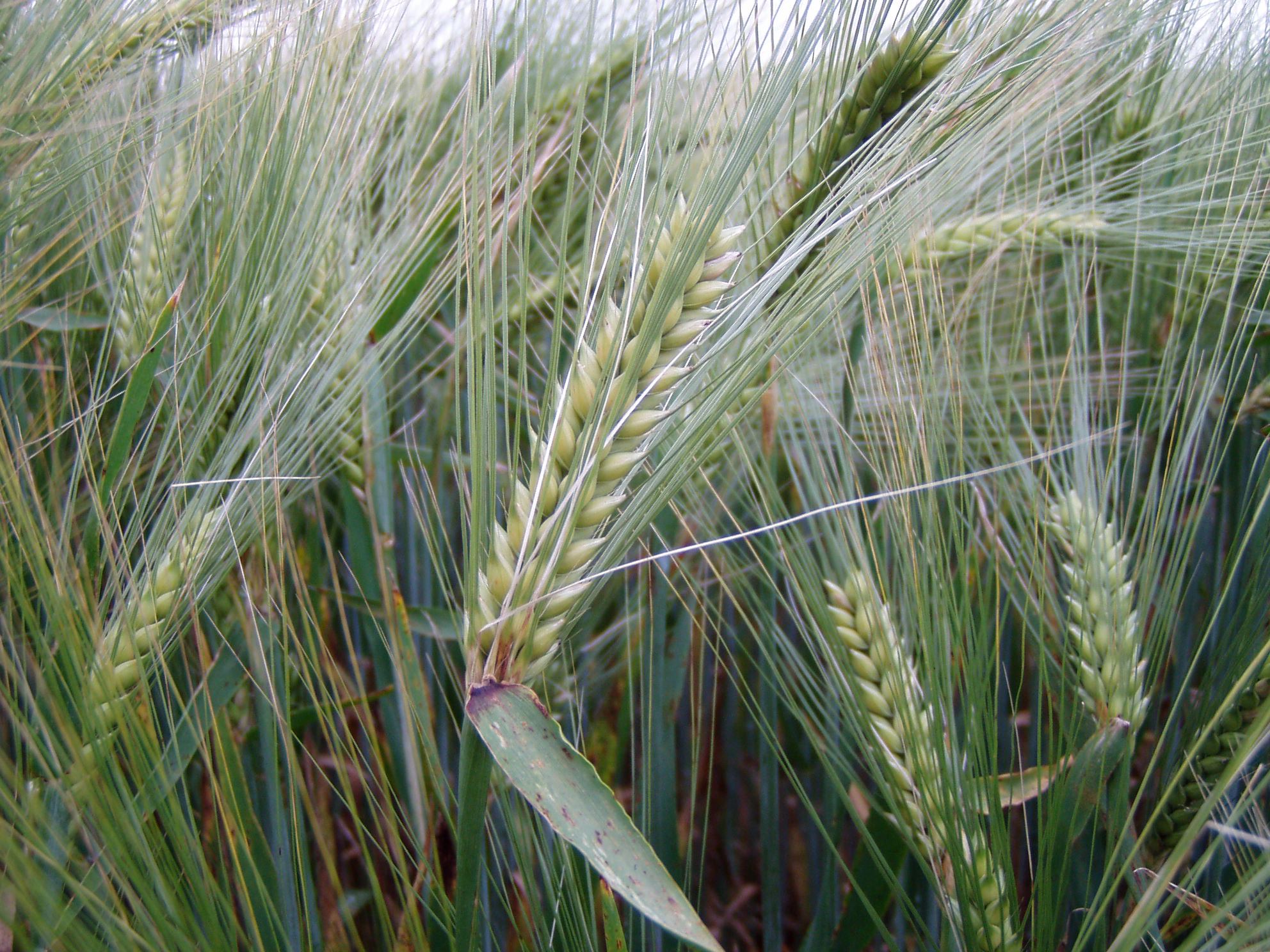
Barley (Hordeum vulgare) before being harvested. Photo by Raul Dupagne (Wikimedia Commons, Creative Commons, Public Domain).
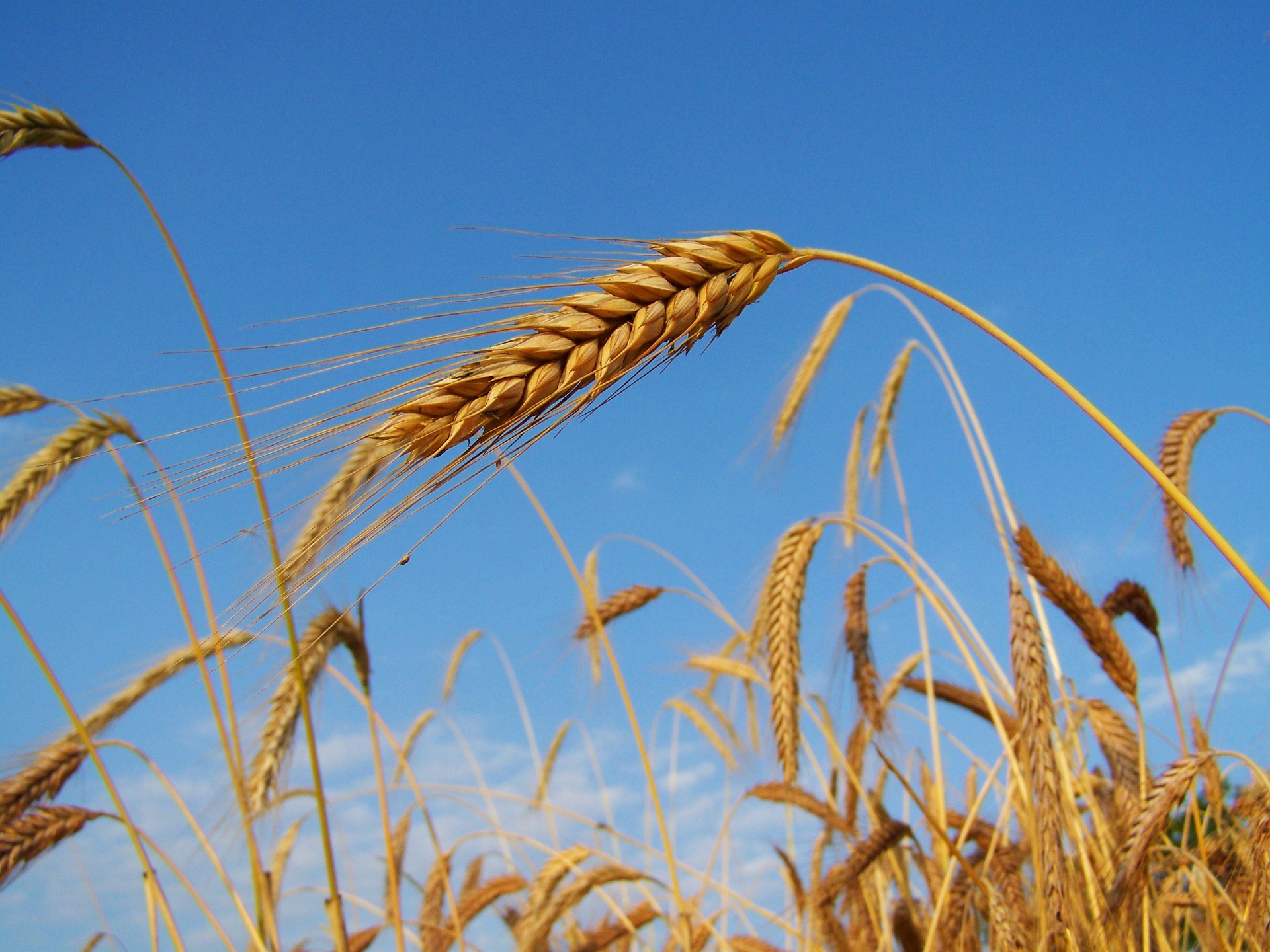
Rye (Secale cereale)before being harvested. Rye is known for its durability in colder climates. Photo by Tappancs (Wikimedia Commons, Creative Commons, CC0 Public Domain).
Why is gluten important in baking?
When the proteins that make up gluten (glutenin and gliadin) are mixed with water, they change the properties of dough. The protein glutenin is responsible for giving dough strength, and the protein gliadin is responsible for giving dough stretchiness. The elasticity imparted by gluten allows dough to be formed into many different shapes. Gluten also helps the dough trap carbon dioxide gas (CO2), contributing to the light, airy texture of many baked goods. This gas may be trapped during fermentation in breads made with yeast or during the baking process in bread products made with baking powder or baking soda.

A baker mixing wheat with water to make bread dough. Photo by Bread Ahead (Wikimedia Commons, Creative Commons Attribution-Share Alike 4.0 International license. Photo resized.)

Various types of baked goods that use gluten. Displayed are various cookies, cupcakes, pies, bread, cake, and a brownie. Photo by Peggy Greb, U.S. Department of Agriculture (Wikimedia Commons, Public Domain).
When and where were gluten-containing grains domesticated?
Wheat was domesticated by humans 10,000 or more years ago in the Fertile Crescent, a region located in today's Middle East that includes Israel, Lebanon, and parts of Egypt, Jordan, Iraq, Syria, Turkey, and Iran. It is one of the world's oldest cultivated crops. Over time, people in the ancient Fertile Crescent are thought to have gathered wild wheats and begun selecting the grasses for larger grains that were easier to thresh (process) as they transitioned to depending on agriculture.
Barely was domesticated along with wheat in the Fertile Crescent. It is a very durable crop and could be adapted to various climates. At first it was used for food, but eventually became very popular for brewing and was the major ingredient in early beers.
The origins of domesticated rye are a bit fuzzier, since it is thought to have been domesticated from an agricultural weed. Rye comes from the same broad region as wheat and rye. It grows well in colder climates and less fertile soils, which made it important in areas where growing other crops was difficult.
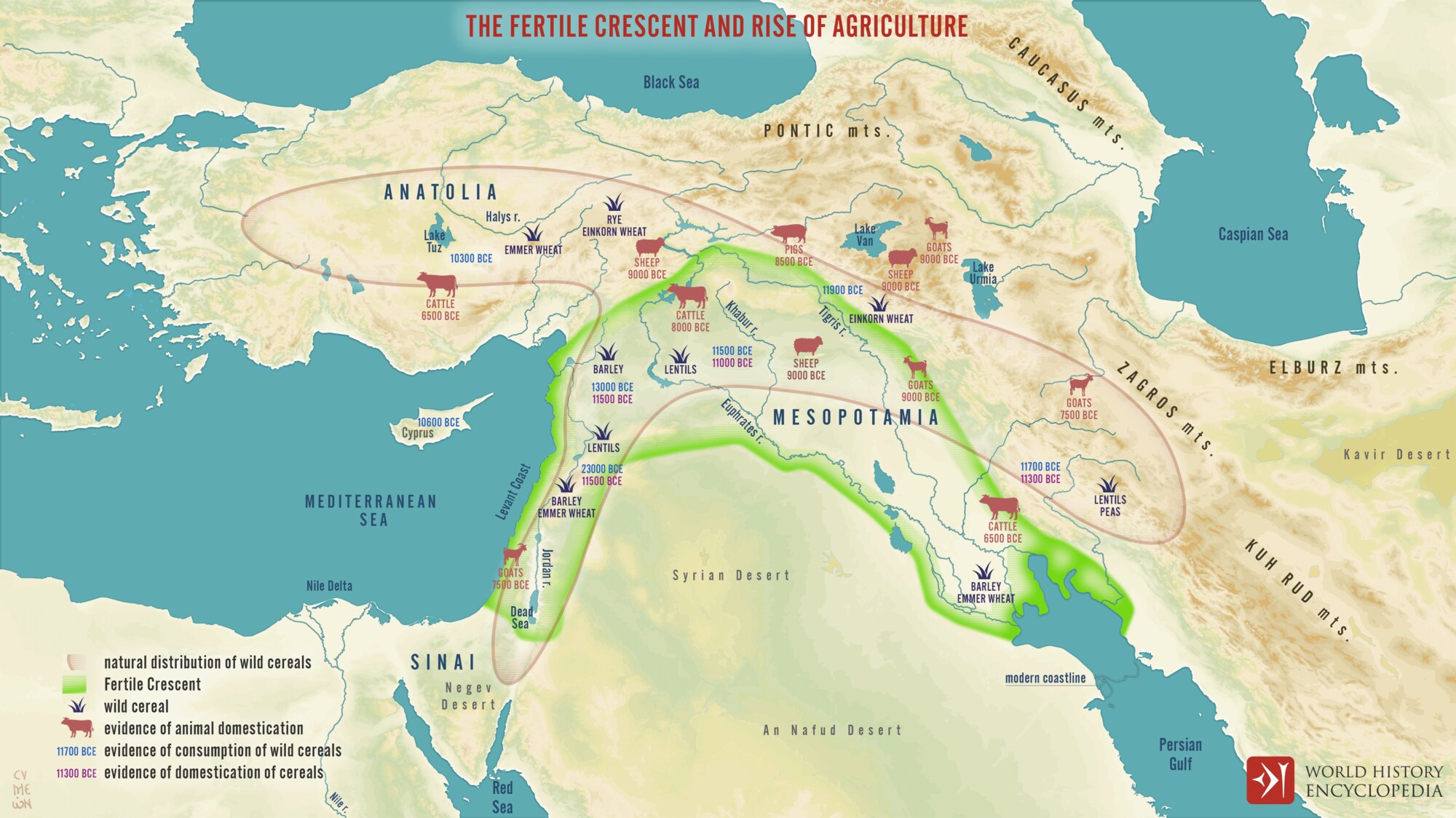
The geographic distribution of barley, rye, and two early types of domesticated wheats (einkorn and emmer) in the ancient civilizations living in the Fertile Crescent. Map by Simeon Netchev (World History Encyclopedia, Creative Commons Attribution-ShareAlike 4.0 International license. Photo resized).
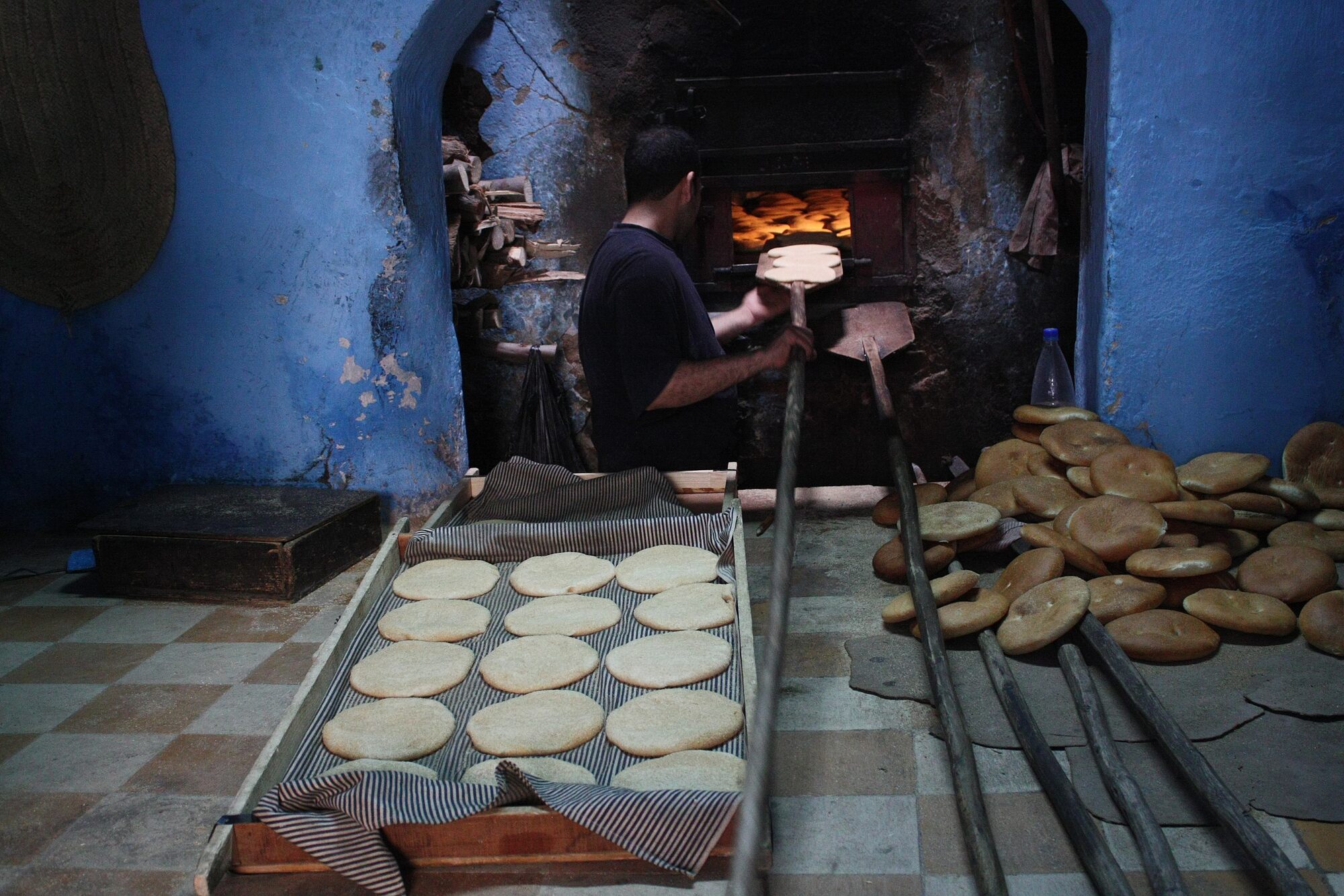
A man making bread using a stone fire oven in a bakery in Morocco. Bread has been harvested from wheat and mixed with water before being cooked over a fire for thousands of years. Photo by Nathalie R. (Wikimedia Commons, Creative Commons Attribution 2.0 Generic license. Photo Resized).
Why do some people avoid gluten?
People may avoid gluten for a variety of reasons, including gluten sensitivity, celiac disease or digestive disorders, and, in some cases, personal preferences or lifestyle choices. Some people may also be allergic to wheat or other grains and may experience symptoms similar to those triggered by other allergies (like hives, sneezing, or even anaphylaxis). This section discusses celiac disease and gluten sensitivity.
Celiac disease
The small intestine is a 20- to 25-foot-long (about 6- to 7.6-meter) tube-like organ connected to the stomach at one end and to the large intestine at the other. It is responsible for fluid and electrolyte balance, as well as nutrient absorption. The small intestine has immune cells to protect the body from harmful antigens that enter through the digestive tract. When these cells are triggered, the reaction can cause digestive symptoms.
Celiac disease is an autoimmune disorder with symptoms triggered by eating gluten. In this disease, the immune system mistakes the proteins in gluten for harmful substances and produces antibodies to attack them. When the immune system attacks these proteins, it causes inflammation and damages the lining of the small intestine. In a person without celiac disease, the digestive system breaks down the proteins in gluten without an immune response.
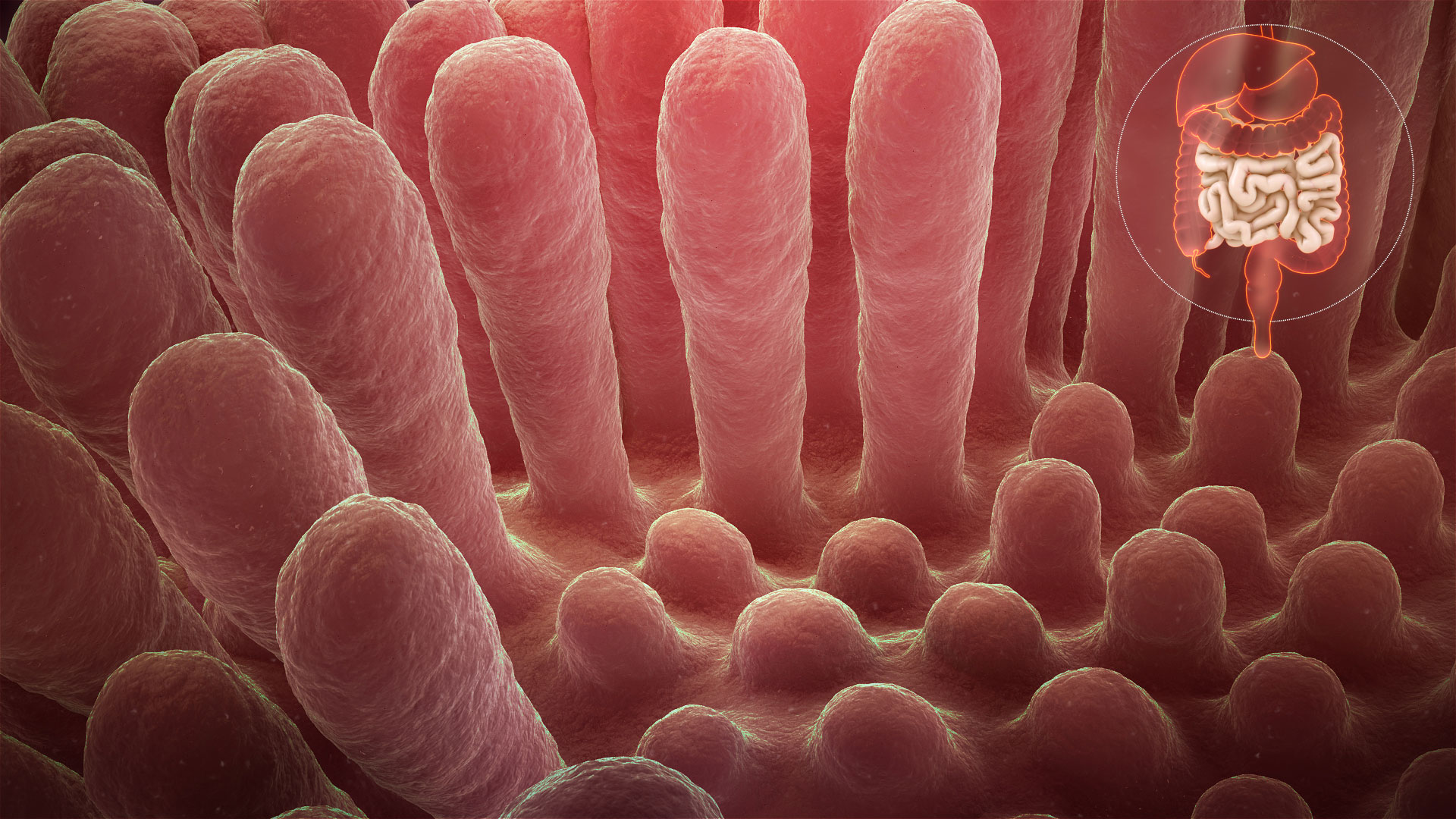
An illustration of damage to the small intestine caused by Celiac disease. The image shows villi, which are finger-like projections lining the interior of the small intestine. The upper left villi, which are longer, are healthy; the small, bump-like villi at the lower right are damaged. Photo by scientificanimations.com (Wikimedia Commons, Creative Commons Attribution-ShareAlike 4.0 International license).
Some of the major symptoms that affect people with celiac disease when they eat gluten include nausea, vomiting, diarrhea, and abdominal pain. They may also experience non-digestive symptoms like anemia, weight loss, skin rashes, and joint pain. Undiagnosed or untreated celiac disease is linked to many poor health outcomes, like certain cancers, malnutrition, and liver failure.
Celiac disease is managed by not eating gluten, which means avoiding all foods that contain gluten-producing grains. Doing this may be difficult because many foods contain gluten, including those are not obvious (like soy sauce). Gluten can even occur in supplements, cosmetics, and modeling dough!

Lipstick is one of the cosmetic products that can contain gluten. Photo by Raysonho (Wikimedia Commons, Creative Commons CC0 1.0 Universal Public Domain Dedication).
Gluten sensitivity
Some people experience gluten sensitivity, which is a condition in which individuals have negative symptoms after eating foods containing gluten. The symptoms of individuals with gluten sensitivity, also referred to as non-celiac gluten sensitivity (NCGS), are usually milder than those of people with celiac disease. They may experience discomfort, bloating, headaches, and fatigue, but without damage to the small intestine. There are no specific biomarkers or tests to confirm if a person has gluten sensitivity; gluten sensitivity is often diagnosed by eliminating gluten and observing whether the symptoms are alleviated or not.
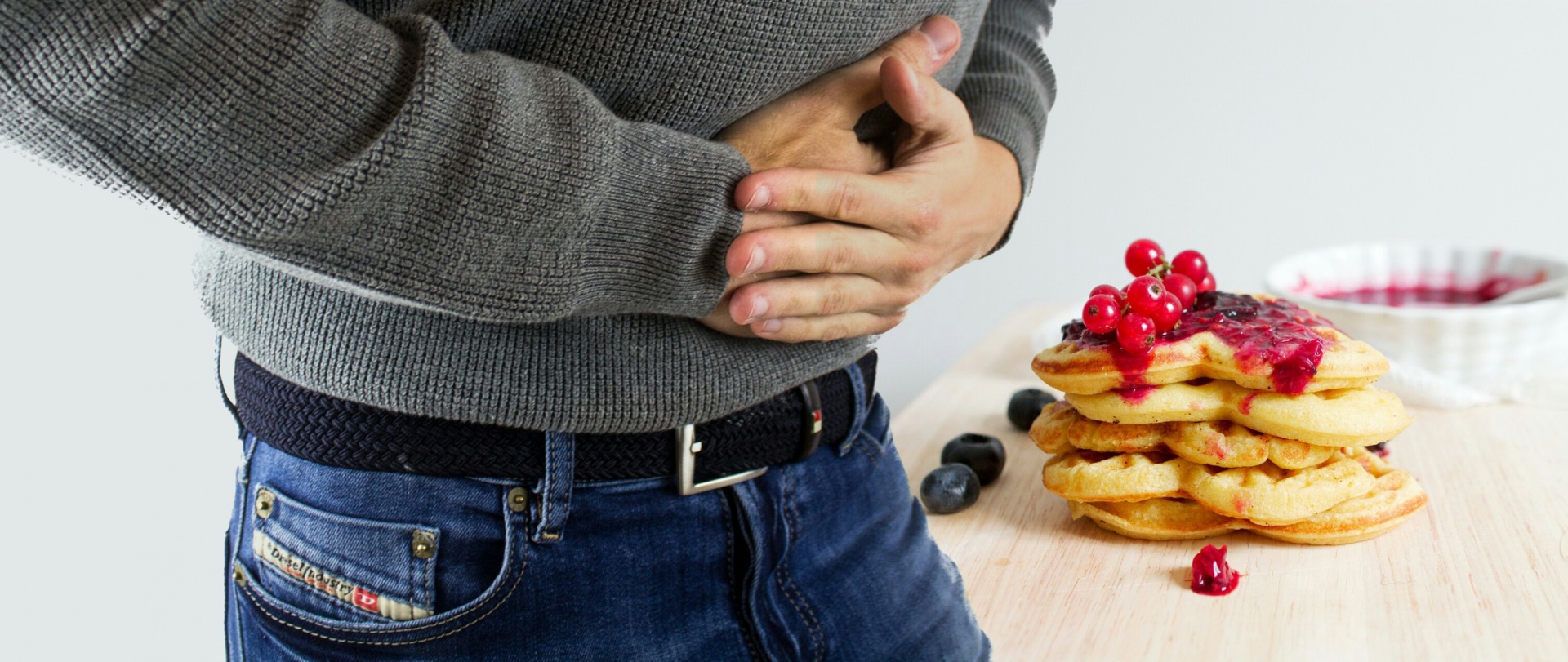
An individual experiencing stomach pain. Photo by Mohamed Mahmoud Hassan (Public Domain Pictures, CC0 Public Domain).
What are the major gluten substitutes?
Other grains that are used to replace gluten include other cereals (grass grains) and pseudocereals (non-grass grains). Grass grains that can replaced gluten-containing grains include rice (Oryza sativa), millet (a variety of different types of grains, including teff), maize (Zea mays), sorghum (Sorghum bicolor), or oats (Avena sativa). Pseudocereals include quinoa (Chenopodium quinoa), buckwheat (Fagopyrum esculentum), and amaranth (several species of Amaranthus). All of these grains lack the proteins that make up gluten. These grains are often made into flour that is used for baking, although they may be used for other purposes, like brewing beer.
Several alternative baking flours not made from cereals or pseudocereals are also used to make gluten-free breads and baked goods. Examples include almond flour, coconut flour, tapioca or cassava flour, potato flour, and chickpea flour.
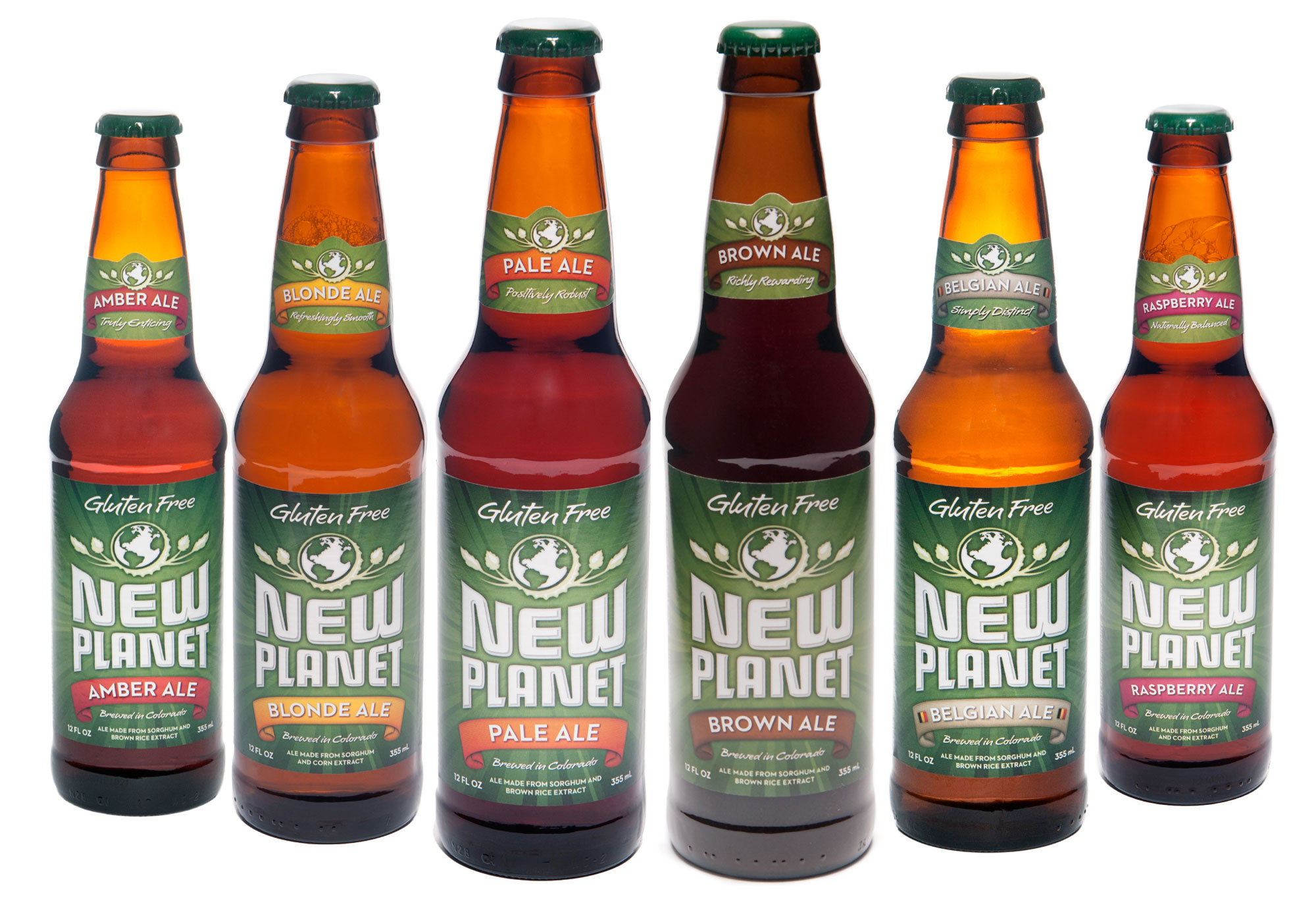
Gluten-free beer made from sorghum and rice, which are both cereals (grass grains). Photo by Parcher (Wikimedia Commons, Creative Commons Attribution-ShareAlike 3.0 Unported license, image cropped and resized).
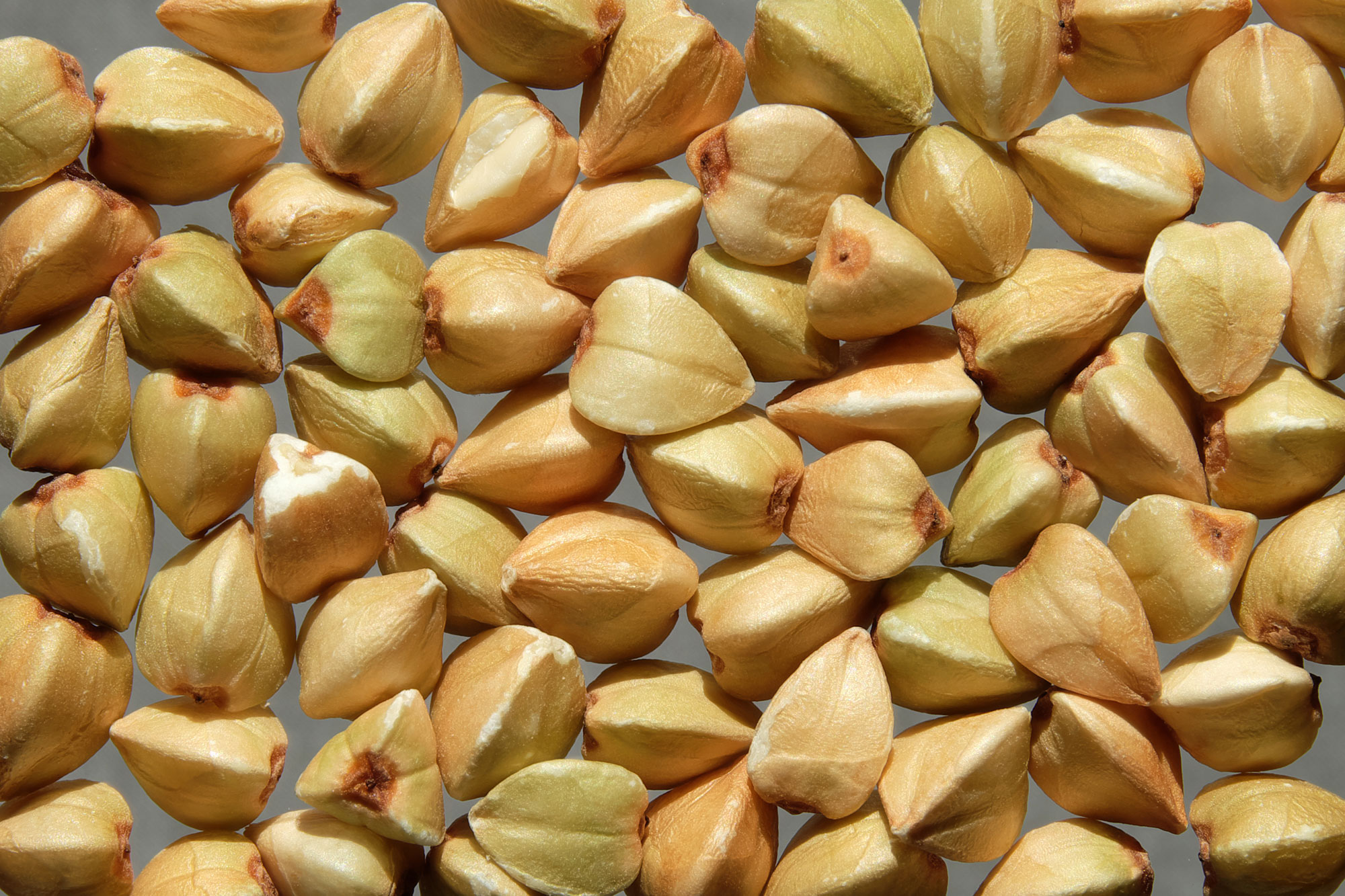
Buckwheat, a pseudocereal used to make gluten-free flour. Photo by V.Boldychev (Wikimedia Commons, Creative Commons Attribution-ShareAlike 4.0 International license, image resized).
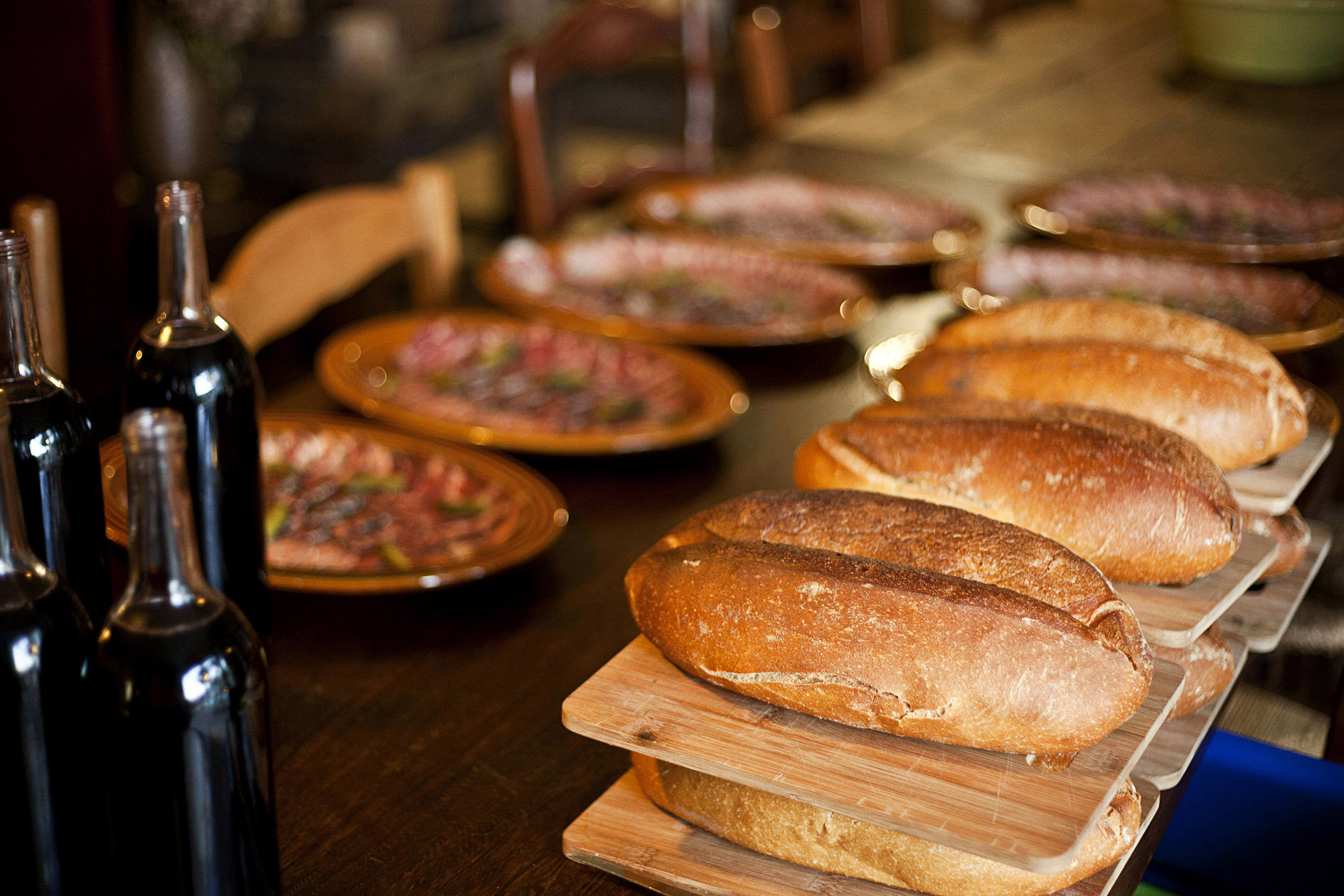
Gluten-free bread made with chestnut flour and served on a charcuterie board. Photo by Shutter Lover (Wikimedia Commons, Creative Commons Attribution 2.0 Generic license).
It is important to note that cross-contamination is a large concern for individuals who are affected by gluten, especially those with celiac disease. Cross-contamination occurs when gluten-free grains are processed in facilities that also process gluten-containing grains, where they can be contaminated by small gluten-containing particles. For people with celiac disease, tiny amounts of gluten can trigger strong reactions.
In the United States, the U.S. Food and Drug Administration regulates the labeling of gluten-free foods. Foods that are labeled as "gluten free" (or similar language) must contain no more than 20 parts per million gluten.
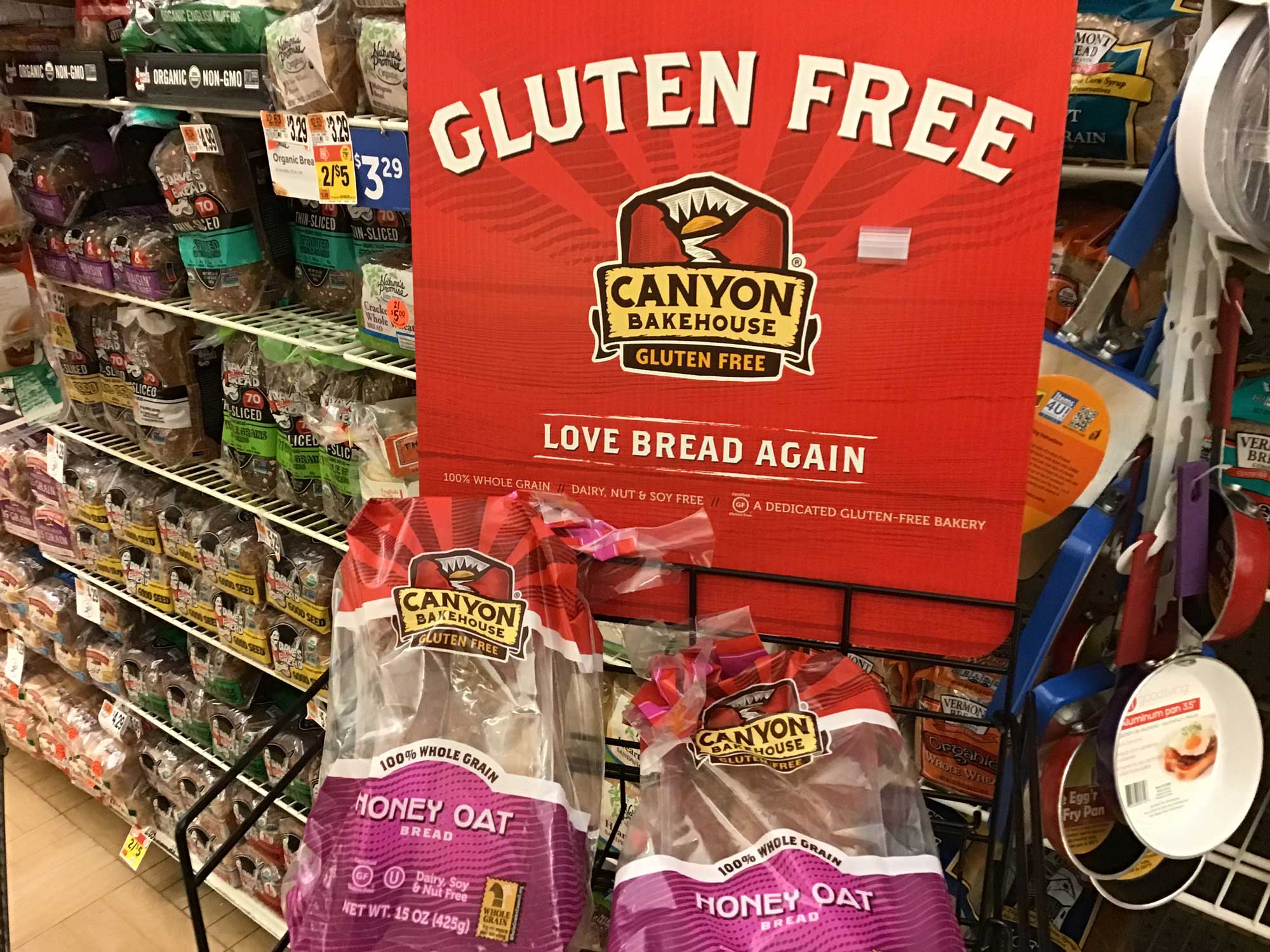
Gluten free bread for sale at a grocery store. Photo by Mike Mozart (flickr, Creative Commons Attribution 2.0 Generic license, image resized).
Resources
Websites
Gluten and food labeling (U.S. Food & Drug Administration): https://www.fda.gov/food/nutrition-education-resources-materials/gluten-and-food-labeling
Celiac disease (National Institute of Diabetes and Digestive and Kidney Diseases): https://www.niddk.nih.gov/health-information/digestive-diseases/celiac-disease
What is gluten? (Celiac Disease Foundation): https://celiac.org/gluten-free-living/what-is-gluten/
Wheat allergy (Cleveland Clinic): https://my.clevelandclinic.org/health/diseases/17717-wheat-allergy
Articles & reports
Jones, T. 2019. Are oats and oatmeal gluten-free? Healthline, 12 June 2019. https://www.healthline.com/nutrition/gluten-in-oats
Preece, C., A. Livarda, P.-A. Christin, M. Wallace, G. Martin, M. Charles, G. Jones, M. Rees, and C. P. Osborne. 2017. How did the domestication of Fertile Crescent grain crops increase their yields. Functional Ecology 31: 387-397. https://doi.org/10.1111/1365-2435.12760
Waffle, V. no date. Non-celiac gluten sensitivity shows distinct immune response. (Celiac Disease Foundation): https://celiac.org/non-celiac-gluten-sensitivity-shows-distinct-immune-response/
Books
Murphy, D. J. 2007. People, plants and genes: The story of crops and humanity. https://doi.org/10.1093/acprof:oso/9780199207145.001.0001



